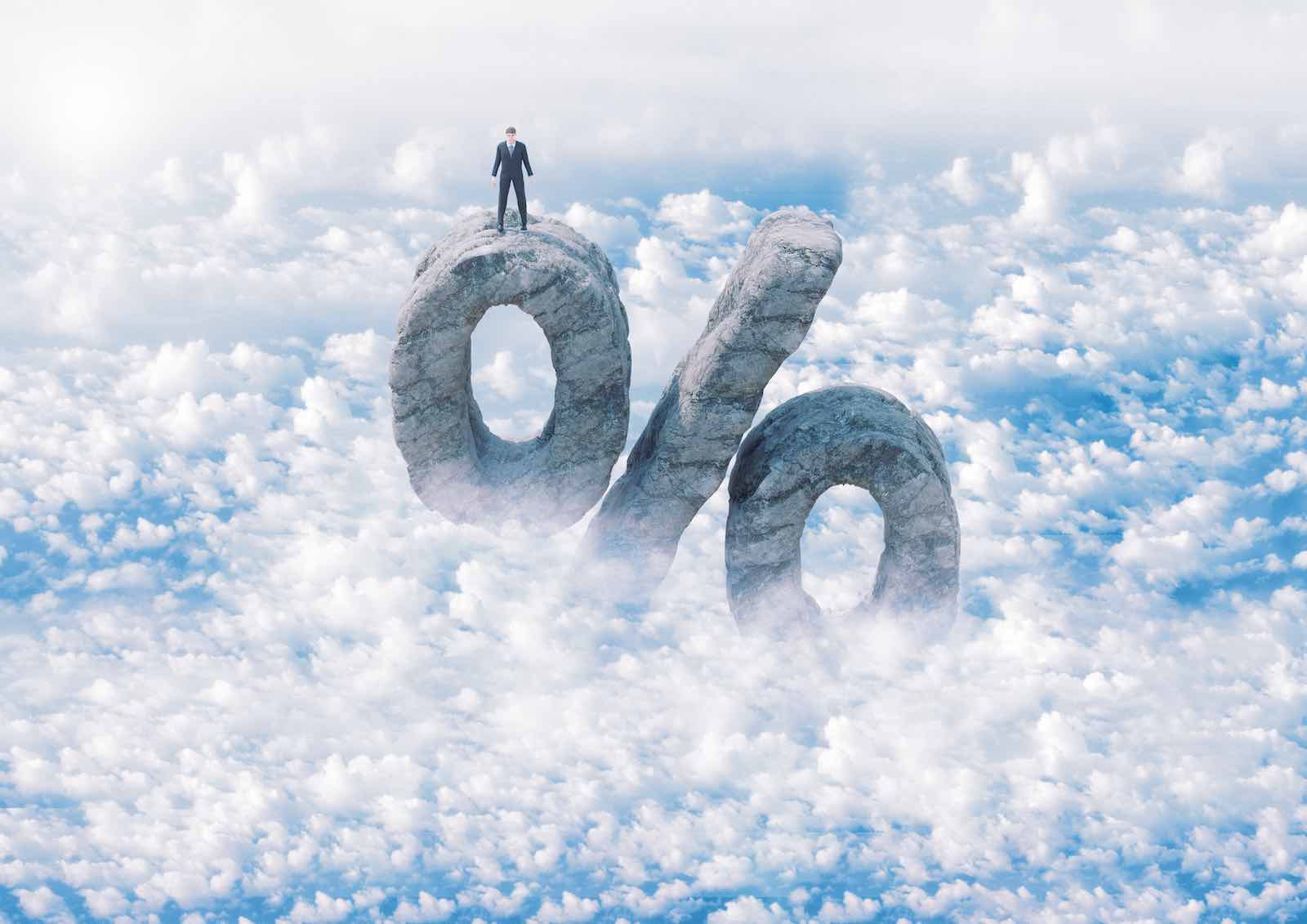(Editor’s note: In this conclusion to ImpactAlpha’s four-part Macro Impact series, contributing editor Rob Brown parses the economic signals for public and private impact investors. In earlier installments, Rob examined ‘first-time ever’ economic conditions that challenge impact investors to rethink models and expectations, the small but steady gains for workers that are key to the surprising health of the US economy, and the challenges for early stage companies as higher input costs and rising wages pressure profit margins. We’ll return to all of these themes, so drop us a line about what you’re seeing and what you need to know.)
_____________________________________________________________________________________
ImpactAlpha, April 17 – This feels like a Goldilocks moment, and impact investors are sitting in Baby Bear’s chair.
Despite the drumbeat of negative election-year rhetoric emanating from the DC echo chamber, objectively, for most investors, things look rosy.
At the end of 2023, the economy appeared to be headed on a path somewhere between a benign slowdown and a mild recession. But since then, the data appear far less moderate — and more likely indicate economic momentum. As some have said, the US economy may have gone from soft landing to no landing.
The US economy seems stable, the interest rate environment has normalized, lending markets are thawing and investor sentiment is back to positive.
As broad markets have rallied over the last six months, impact investors who have been bruised and frustrated should take note. Many of the most compelling high impact businesses, particularly companies in the alternative energy and transportation sectors have lagged the broad markets.
Both stronger investor sentiment and improved earnings growth for earlier-stage companies could drive opportunity in the near to medium term ahead. Sentiment is improving, even as the negative rhetoric around “ESG-related” companies is causing some valuations to be depressed. We see that as an opportunity for impact investors; for those who are willing to adjust to new realities, and maintain a long term view.
The things we would look for at this point in the cycle: companies with large, identifiable markets, resilient cash flows, quality leadership and a moat around their business.
In short: companies with high impact and higher-quality, durable earnings.
What’s next for investors?
The biggest risk on investors’ minds, a US recession, looks to be off in the distance, even as inflation concerns persist for consumers.
Instead, growth appears to be resilient. The scorching annual GDP growth rate of 4.9% in last year’s third quarter was followed by growth of 3.4% in the fourth quarter of 2023. Goldman Sachs this week raised its estimate of first quarter growth to 3.1% from 2.5%, based on strong retail sales.
With a firm policy stance which investors are only now beginning to appreciate, the Federal Reserve appears to have kept the US economy on a careful glide path (in my humble opinion, Jerome Powell will be considered among the greatest of central bankers, despite his lack of training as an economist – or maybe because of it).
Credit markets appear to be more accommodating to borrowers. Long-term interest rates remain below the cycle high, just as the Fed continues to indicate a path toward easing rates – even if that path is long than expected. In the background, credit standards for bank lending are becoming less restrictive, though still far from easy.
Households, which collectively drive more than two-thirds of the US economy through consumption activity, are seeing signs for optimism. Broad measures of inflation are cooling, real labor compensation is rising, and expenditures are continuing to grow. Industrial production, the manufacturing sector in particular, which contracted for much of 2023 has stabilized and showed a positive first quarter.
It all seems a fertile field for investors. So-called risk assets have responded well.
Public equity owners have pushed the stock market to all-time highs. In the private markets, anecdotally, from investment firms we know, both LPs and venture capital investors are talking about liquidity again. VC markets – though still sluggish – are positioned to loosen up.
Early-stage founders and their potential investors appear to be narrowing to a more realistic valuation landscape for the next round. Deals are coming back to the table, with a recognition that valuations will be lower than pre-crisis.
To be sure, many business models will not thrive in this new higher rate environment, as we have written about previously. Despite a well-intentioned mission, many early-stage companies are unlikely to be sustainable. And for many that are, capital will be more expensive, driving investor returns potentially higher.
But for those companies with a well-defined impact mission, a strong business model, and positive cash flow, there are reasons for an investor to be optimistic in the current, more stable economic environment.
Fully valued
Even with that optimism on the economy, the opportunity ahead should be assessed carefully.
For starters, corporate profits for large public companies in the US, while strong, seem to have peaked, with aggregate profit margins back to pre-crisis norms, as we have described in this series. That is, a stable economy benefits top-line revenue growth, but profit margins are not necessarily going to follow.
If prospects for earnings growth are modest, a rational investor should ask, why is the US stock market at all-time highs?
The clearest answer to that question is investor sentiment. The most visible of the metrics used to value assets is the higher PE ratio of the stock market. Basically, investors have driven up the price paid for the earnings generated by those companies.
The recent rally roughly began around Halloween last year. Based on the forward earnings expectations of the S&P 500 companies since then, the P/E multiple for large cap companies has risen by roughly 12%. The price of the index has risen by 20%. In other words, more than half of the return on large cap stocks is due to a higher price on earnings.
The next questions would then be: What’s driving the increase in earnings multiples? And are those drivers affecting all parts of the market?
That’s more complex. Multiples generally respond to two issues. The first is the relative attractiveness of an asset class, or how investors view the opportunity compared to risk-free assets like cash or government bonds. The second is confidence: How much confidence do I have that earnings will grow?
When interest rates are low, riskier assets like early-stage VC and public equities are relatively more attractive. That leads to more risk taking. The price paid for earnings rises. The valuation metric used for private companies, or the stock price multiple for public companies increases.
The opposite argument also holds. As interest rates rise, the valuation for riskier assets falls. Despite the rise in yields across the entire yield curve, investors now recognize that, looking ahead, interest rates are likely to stall here, and potentially fall, even as hopes for an immediate cut in rates are increasingly less certain.
Since October, the multiple for large cap stocks has responded to the expectation for lower interest rates and the increasing confidence that the Fed will begin easing the Fed Funds Rate. Longer-term rates, like 10-year government bond yields, remain well below their cycle peak.
And, since October, investors have broadly incorporated this anticipated Fed easing cycle while watching 10-year Treasury yields drop from 4.9% to 4.7%, and debating how soon the Fed will loosen Fed Funds rates.
That may be positive, but is also well known. Investors have taken into account that we have reached the peak of the interest rate cycle and even come down from there, with more easing to come.
In other words, the stage of the interest rate cycle which would favor equity investors is already priced into the market. Stock price multiples for large cap companies are in the mid- to high-20s.
And that’s why – despite all the joy in the market from higher stock prices – the equity risk premium, which compares expected equity market returns to expected yields on risk-free assets, is near a 20 year low. In other words investors making an asset allocation decision don’t expect to get paid much of a premium for holding large cap stocks right now.
Higher multiples also can reflect expectations of better future earnings growth. That’s the rationale which supports the stock prices of growth companies trading at higher multiples than more mature companies generating stable cash flows.
Early-stage venture deals trade at higher valuations than later rounds of venture capital funding (the idea is often valued more richly than the reality). In anticipation of a faster earnings trajectory, investors are willing to pay more for a company’s earnings today.
Earnings growth appears to be peaking, at least in the US. Profits margins subsided from around 14% in Q3 of 2021 to 10.7% as of Q1 of this year.
The conclusion then is that investors seem to have incorporated both the future yield curve and stable earnings growth into their market assessment.
Despite any investor euphoria, the goldilocks moment might be coming to an end, as large cap companies appear fully valued. It is challenging to see how sentiment will get better, or earnings will “grow into” higher multiples. Challenging, that is, if you are sitting in Papa Bear’s chair.
Green rebound
This is where things get interesting for impact investors. The broad market just may be a head fake for impact, setting up what could be a rewarding moment to catch up.
We finally are seeing the bruises heal from the most recent round of investor losses. As sentiment improves, market multiples are rising for smaller companies. In particular, many profitable green companies, which were hit with negative sentiment from the ESG backlash, appear to be better positioned, though still lagging the broader market, and admittedly reacting negatively to recent comments by the Fed.
We note again that the multiple for the SP500 is up almost 12% since October, right around the long run average. Despite all the noise around the SEC’s “ESG rule,” even large-cap ESG stocks are benefiting from improved sentiment. The KLD400 index has a PE ratio almost 10% above long run averages.
The same cannot be said however for earlier-stage public companies, particularly in the climate space. For those companies, still tainted by a bit of ESG sentiment, and by the poor performance post-crisis, investor sentiment remains muted. The PE multiple on QGREEN, for example, Nasdaq’s green index, remains 7% below the long run average, lagging well behind larger cap companies.
The price performance has followed sentiment. Climate investors noted that in the recent rally, large caps are up more than 20%, while QGREEN, is up just 13%. The Wilderhill Clean Energy Index is down by 19%.
Despite broader market optimism, skepticism dominates the sector. Investors remain overly concerned about the implications of the negative rhetoric toward ESG, which is clouding the more important growth trends toward alternative energy and no-carbon transportation, not to mention the implications of the IRA and Greenhouse Gas Reduction Fund. To be sure, there are sectors which will struggle, such as rooftop solar installation.
But the economics of most alternative energy companies is improving as markets grow. With market multiples relatively quite low, there is room for improving sentiment to help sustain better earnings.
The conclusion at this juncture is that impact investors, particularly those focused on alternative energy and a long horizon, are looking at a potentially rewarding opportunity.
_____________________________________________________________________________________
ImpactAlpha contributing editor Rob Brown was most recently co-founder and head of impact research for Atlas Impact Partners. Previously, he was head of research at JUST Capital and led research teams at AllianceBernstein and Nomura Securities International. Earlier, he was responsible for global macro research at Morgan Stanley.




